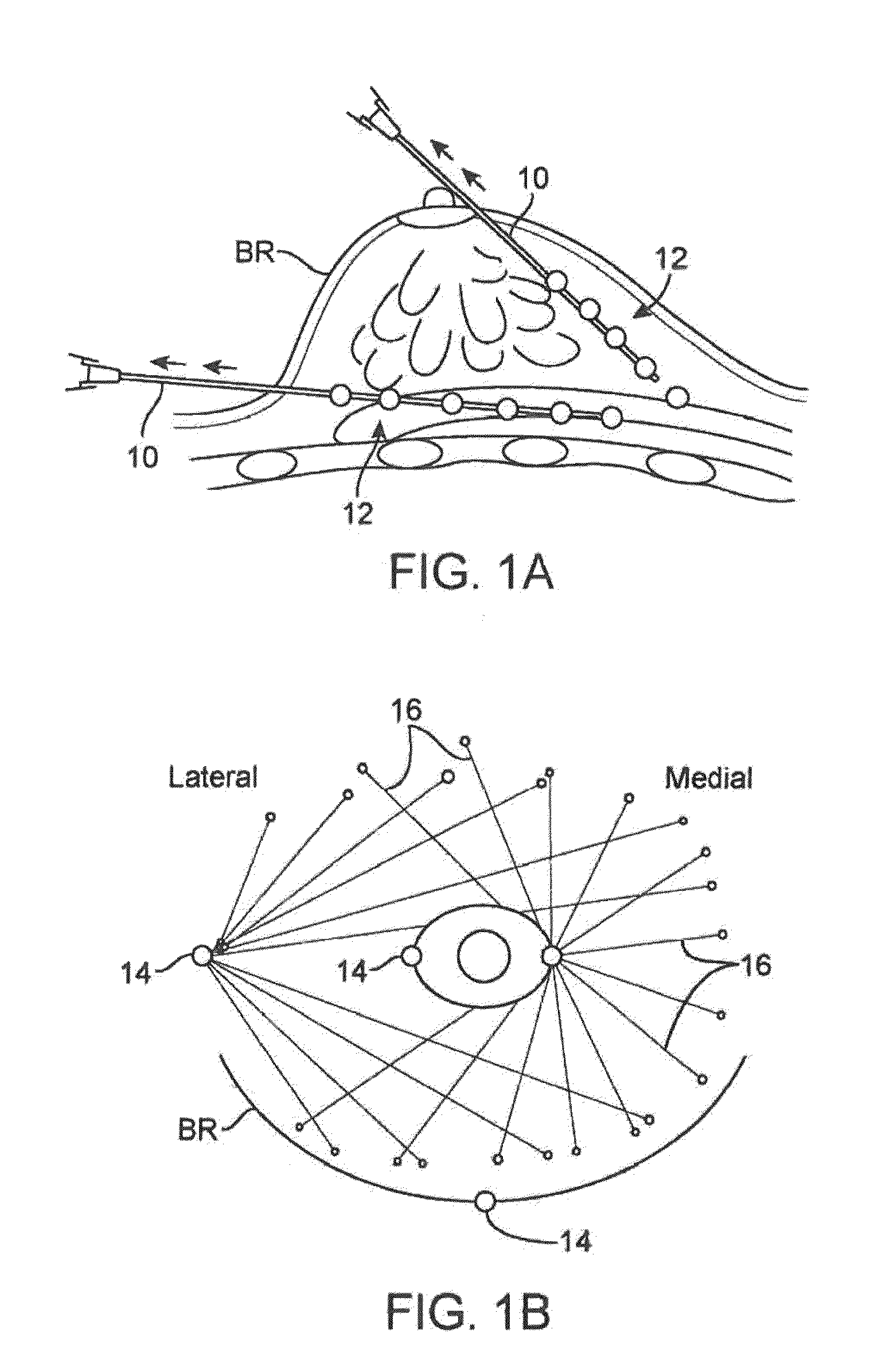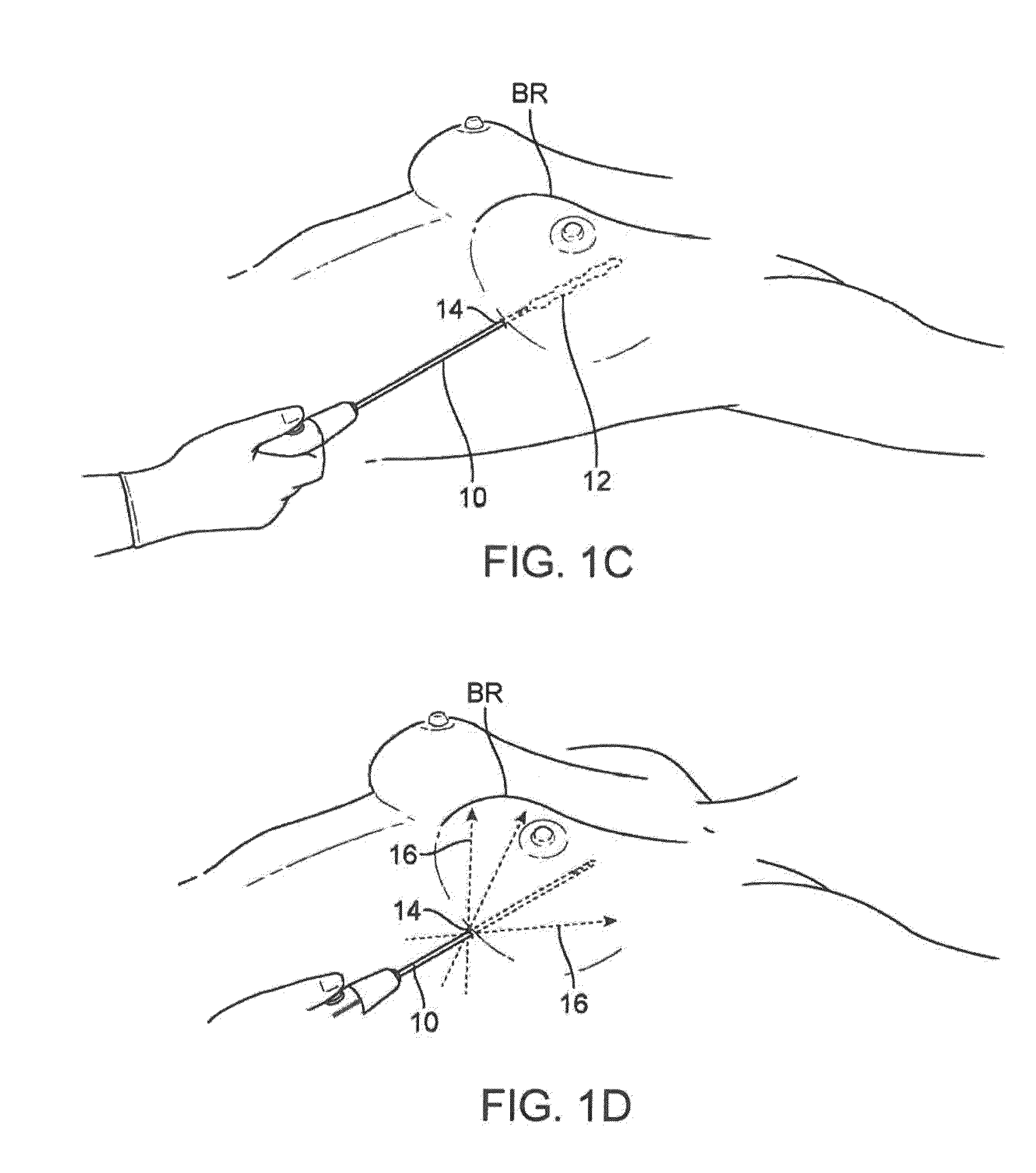Tissue transfer systems
a tissue transfer and tissue technology, applied in the field of medical devices, can solve the problems of difficult detection, difficult use and adoption, and difficult identification of desirable locations for injecting fat (located between the pectoral muscles and breast ducts), and achieve the effects of minimizing or inhibiting any clogging of fat, accurate control, and minimizing obstruction
- Summary
- Abstract
- Description
- Claims
- Application Information
AI Technical Summary
Benefits of technology
Problems solved by technology
Method used
Image
Examples
Embodiment Construction
[0104]As shown in the cross-sectional side view and anterior view of FIGS. 1A and 1B, a cannula 10 may be inserted into the breast BR of a subject at one of several points of entry 14 in proximity to the nipple and circumference of the breast BR. After insertion of the cannula 10 into the breast, the cannula 10 may be withdrawn from the breast BR while injecting the fat in multiple deposits of adipose tissue or fat 12 such that the deposited fat 12 remains within the tract 16 formed by the withdrawn cannula 10. Multiple tracts 16 of the deposited fat 12 may be injected within the breast utilizing the common entry points 14 until the breast has been desirably remodeled and / or augmented.
[0105]FIGS. 1C and 1D illustrate an example of how the cannula 10 may be inserted into a single entry point 14 beneath the breast BR and how the fat 12 may be deposited along a tract defined by the cannula 10. With the cannula 10 positioned through the entry point 14 within the breast BR, the cannula 1...
PUM
 Login to View More
Login to View More Abstract
Description
Claims
Application Information
 Login to View More
Login to View More - R&D
- Intellectual Property
- Life Sciences
- Materials
- Tech Scout
- Unparalleled Data Quality
- Higher Quality Content
- 60% Fewer Hallucinations
Browse by: Latest US Patents, China's latest patents, Technical Efficacy Thesaurus, Application Domain, Technology Topic, Popular Technical Reports.
© 2025 PatSnap. All rights reserved.Legal|Privacy policy|Modern Slavery Act Transparency Statement|Sitemap|About US| Contact US: help@patsnap.com



